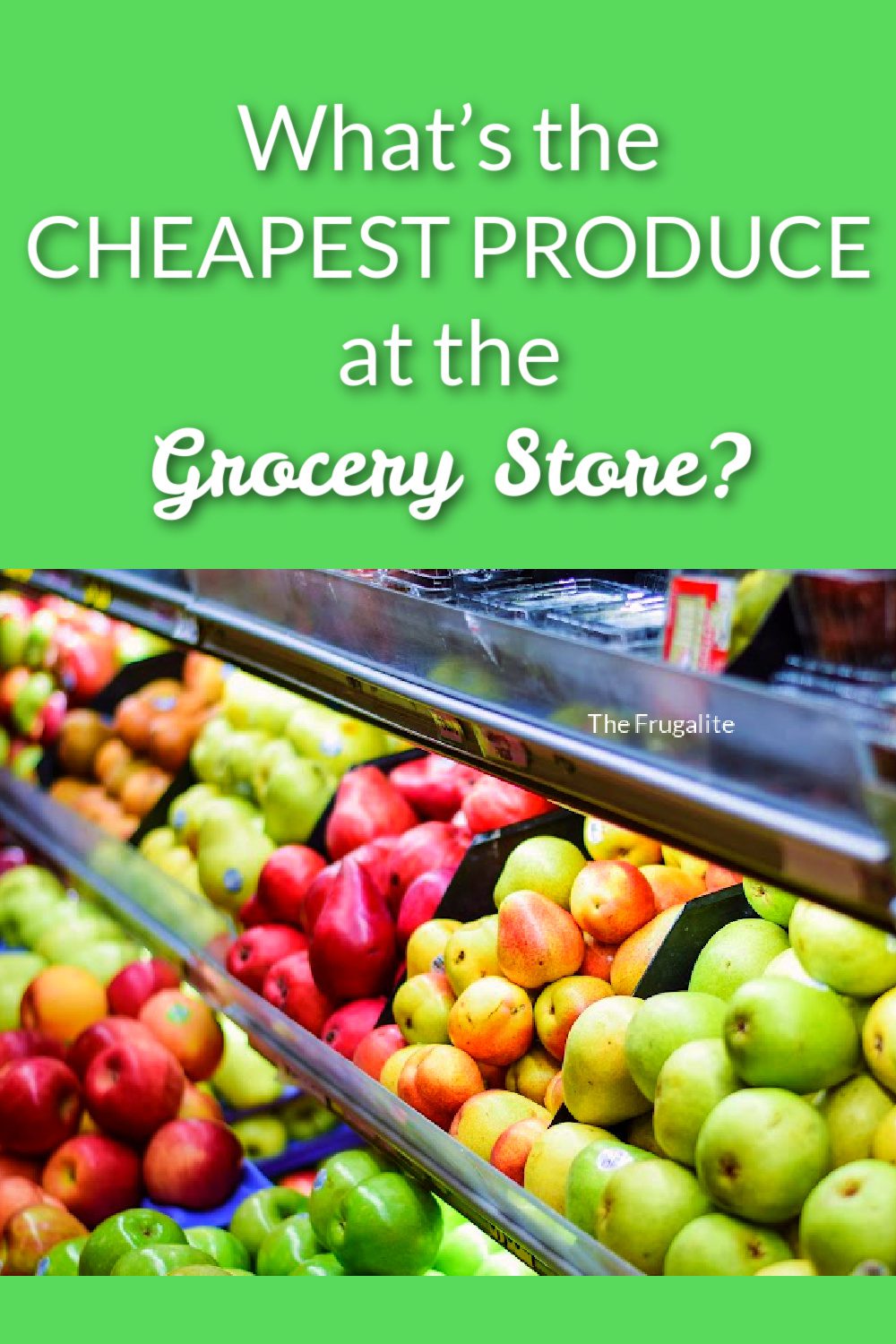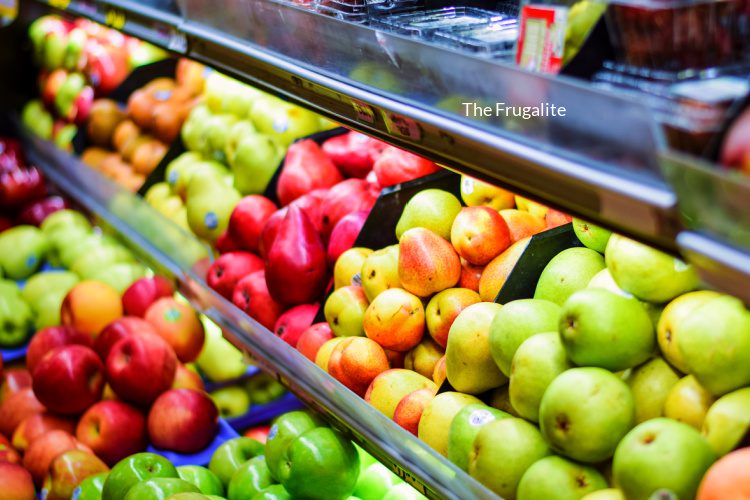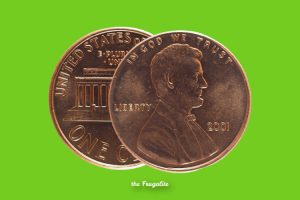(Psst: The FTC wants me to remind you that this website contains affiliate links. That means if you make a purchase from a link you click on, I might receive a small commission. This does not increase the price you’ll pay for that item nor does it decrease the awesomeness of the item. ~ Daisy)
Has your doctor told you of late that you need to eat more fruits and vegetables? Have you ever wondered how you could afford that? If this is where you currently find yourself, and you’re wondering what exactly is the cheapest produce at the grocery store, we’re here to help.
We’re going to be taking a look at what the cheapest produce is at your favorite local grocer so that you can look after your health in as frugal a manner as possible.
How we’re going to be making our judgments…
It’s not exactly fair to say that a single apple is cheaper than a bag of grapes. We need a set structure to determine what is actually cheaper. We want to compare apples to apples, right? So, to do that, we’re going to be comparing the price of various forms of produce per pound.
To determine the number of calories in each food, we’re going to be using CalorieKing.com. Let’s dive right in. All of our prices are going to come from the Etowah, Tennessee Piggly Wiggly, all the foods are the raw version (no frozen or canned options), and nothing is organic.
Bananas
The cheapest of the produce on our list is the humble banana. These come in at 89 calories, $0.65/pound, and 0.4 pounds per banana.
This does force us to have to do a little bit of math here. So, 2.5 bananas is a pound and costs $0.65.
Please don’t try to walk out of the store with half a banana. They don’t like that. Once you get home with your fully intact bananas, know that there are a number of Frugalite-friendly things you can do with the peel that may save you a little bit of cash.
Oranges
Next on the list would be oranges. An orange costs $0.98 each and weighs an average of 8.9 oz. If we do a little math, this comes in then at something like $0.77/pound. This $0.77 will give you 86 calories as well.
Apples
A single red delicious apple holds approximately 93 calories and costs 99 cents/pound. The average red delicious weighs half a pound, so this would mean that a single red delicious apple would cost you right at 50 cents. Two red delicious apples would then cost a dollar.
So, apples come in at roughly $1.00/pound.
Seeing that these are such an inexpensive form of produce, buy a bunch when they’re in season, and learn how to preserve them. You may be able to save yourself a bit of money during the off-season this way.
Carrots
Carrots cost $1.19/pound. You don’t get a lot of calories out of these – only 31 per carrot – but if you’re looking at bumping up your veggie intake, these are an economical means of doing so.
Pears
If pears are more your style than apples, you’re going to end up spending $2.29/pound for 103 calories per fruit. Seeing that there’s nothing else that pairs with stinky cheese like a good, ripe pear, this is well worth the cost in my book.
Radishes
Radishes are surprisingly pricey for the number of calories you’ll get. You’ll spend $2.49/pound for radishes, with each radish giving you a single calorie. Since each radish weighs about 2 oz, you’ll pay $2.49 for eight calories. Personally, when I buy food, I aim to buy food, but hey, you do you.
Celery
From a calorie standpoint, here’s another food that doesn’t make a lot of sense for the money. You’ll pay $2.99/pound here with each stalk having six calories. Every bunch of celery I’ve ever seen has maybe 12 different stalks to it, so you’re looking at 72 calories costing you $2.99 here.
Peaches
Peaches are an expensive fruit, and if you’ve ever attempted to grow these little boogers, you know why. Everything kills them, and everything eats them. If you can successfully fight off the fungi, the wasps, the ants, the birds, the deer, and every other creature out there, you may get a peach. Maybe.
It’s because of this that paying $3.99/pound is pretty standard. A peach weighs about half a pound, so that means each peach costs you $2.00 (and holds 58 calories).
Blueberries
This is another fruit that costs us a little bit of math to figure out the answer to. You’ll typically pay $2.99/pint. A pint of blueberries weighs around 12 oz. So, that means blueberries cost an average of $3.99/pound. You’ll find this is pretty typical for berries. They’re expensive.
Strawberries
Strawberries cost $3.99/pound as well, so you’ll spend the same here as you would for blueberries. See what I mean about berries being priced pretty similarly?
Lettuce
There are a host of options for lettuce out there, but let’s stick with romaine hearts for the sake of brevity. You’ll spend $6.99 for 22 oz, with lettuce having 33 calories/7.3 oz. That’s about $7.00 for 100 calories. Personally, I would just say to grow your own. You can pick up a packet of lettuce seeds for right around $2.00, and if you can wait a month, you’ll have as much lettuce as you could want for weeks on end.
This will give you an idea of what the cheapest produce is at your local grocery store.
There’s going to be a bit of variability depending on where you are at, but this approximate guideline should serve you pretty well. If you’re looking to up your intake of fruits/veggies, but really need to watch every nickel and dime that you spend, you’re may want to want to stick with apples, oranges, and bananas. It’s hard to find a fruit or veggie that is cheaper than these three, and they’re full of all kinds of vitamins, minerals, antioxidants, and fiber too.
What are your thoughts on the price of produce? Do you have any tips for finding inexpensive fruits and vegetables? Are there other fruits and veggies you would recommend? Let us know in the comments below.
About Aden
Aden Tate is a regular contributor to TheOrganicPrepper.com and TheFrugalite.com. Aden runs a micro-farm where he raises dairy goats, a pig, honeybees, meat chickens, laying chickens, tomatoes, mushrooms, and greens. Aden has two published books, The Faithful Prepper and Zombie Choices. You can find his podcast The Last American on Preppers’ Broadcasting Network.












8 thoughts on “What’s the Cheapest Produce at the Grocery Store?”
I was just reading yesterday about how the war is affecting the banana trade; we’ll see if the cost goes up or down. This is pretty close to the article I read: https://www.producereport.com/article/russia-ukraine-war-deals-heavy-blow-ecuadorian-banana-trade
First of all, buy in season. Those $4 a pound strawberries (in March) will be 99 cents in June. And bananas here in Texas are 49 cents a pound. I’ve always thought that was a nationwide “loss leader” to get you into the store.
Here’s a thing. Do not buy carrots. Buy baby carrots. They’re usually 99 cents a pound and you use the entire carrot. You don’t cut off the ends, they’re pre-peeled. Just chop and eat.
As I said in another thread, if there’s an ethnic food store in your area, buy produce there. Why? Because you’ll get more variety and better prices. (Don’t buy peanut butter or cans of beefaroni there.) I buy a lot of my vegetables at a Korean grocery chain (H-Mart, based in Atlanta) because they’re cheaper than Kroger and they have a larger variety. Four types of eggplant and five cabbage varieties? Check. Some veggies and other products I buy at a local middle-eastern store called Phoenicia. They have lots of different dried fruits and nuts you can’t find at Piggly Wiggly.
Strawberries in season here, from the farmer’s market, are $5/quart. It’s still healthier than buying out of season in the store, plus I support my local farmer directly. Radishes are easy to grow (granted that’s not the point of the article) and the greens are edible. Ditto for beets; easy to grow and the greens are edible. Blueberries last year cost me $33 for 10 lbs, so $3.30/lb and I dehydrated them. While peeled carrots isn’t the end of the world, there’s quite a lot of vitamin C and niacin in those peels, and they’re also easy to grow.
That’s interesting, as our prices are quite different in the midwest. Most fruit is not sold by the piece but by the pound. Sometimes you find sales of course, then buy those, but apples by the pound are rarely ever .99c anymore. And up here in the midwest Oranges are rarely .99 either, but sometimes in the winter when they’re in season you can find oranges for that price. They usually have quite thick skins, so save those babies for other uses too! if you have a juicer you can peel the outermost rind from the orange with a potato peeler and then juice the whole lot. but then you’re wasting some of the fiber, so find a use for that or??? but at least you get the vitamins from the white pith. Radishes here are usually a buck a bundle, and sometimes you really get a nice bundle. lettuce on the other hand is ridiculous right now. used to be a dollar for a whole head of romaine, now it’s $4 or more. and they seem smaller to me. iceberg lettuce gets a bad rap, but it’s often overlooked and cheaper and really not that unhealthy. use it once in a while, you will remember the great crunch.
I am thinking that math for oranges is incorrect. I think it would be $1.96 a pound for oranges.
I got $1.76.
16oz/lb / 8.9oz = 1.798/lb or, rounded off: 1.8/lb
1.8/lb * $0.98 = $1.76/lb
(My old physics prof would be happy that I showed my units in the right place.)
I would add Spinach, its a nutritional powerhouse. Price wise at my local walmart its $2 and change for 10 oz. But its very easy to grow.
Depending on where you are, potatoes (especially russets) can be massively cheap and are quite nutritious when you eat them with the peel. Squashes and pumpkins are often cheap later in the year. Cabbage is another great one. Nice list!